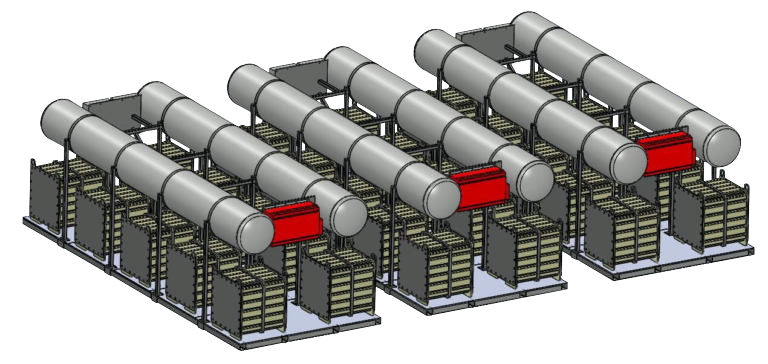
Emerald H2 is a vision that will get translated into reality by building Mega-Scale H2 production, creating the H2 Highway, and ultimately moving to a complete H2-based economy.
From Los Angeles to New York, Emerald H2 plans to bring hydrogen stations to the length of Interstate 70, making the use of hydrogen fuel cell vehicles more practical and efficient.
May 10th 2019 marks the 150th anniversary of the completion of the Transcontinental Railroad. This was an event so transformative it is still celebrated today. On April 11th 2019 TM TM MRE announced it will build the first Transcontinental Hydrogen Highway (THH ). Starting in 2020 MRE will begin building the THH and will be the first company to accomplish this feat. Extending from Los Angeles California to New York City mostly along Interstate 70, it is expected to be open and selling tickets for access to H2 fuel for a ride on the THH by the end of 2021. MRE has already built, patented , trademarked, and had third party attestation done by CSA Group on the fueling infrastructure products that will be required to span the continent. However before this happens much foundation work needs to be done.
The introduction of hydrogen (“H2”) presents several challenges when looked at from the perspective of changing the whole world’s fossil fuel based economy over to the clean renewable hydrogen based economy.
Millennium Reign Energy LLC solutions are a mixture of several small and scalable steps over a period of time that will enable us as a country to reach this goal.

The development of this Model Series was a big breakthrough for Millennium Reign Energy LLC. It provides all five required functions for Hydrogen fueling infrastructure. Hydrogen production, purification, compression, storage and dispensing, all in one revolutionary package on a skid.
These appliances are encased in a ventilated stainless steel enclosures which protects all hoses and J-2600 dispensing nozzle. Multiple key locked entry points for servicing and dispensing. Safety diagnostics are ran constantly.
Fueling nozzle access door will not open if a hydrogen leak has been detected. Mechanical over pressure relief valves on each storage tank. Manual bypass valve to relieve pressure for safe handling. Watch Dog electrical disconnect provides primary mechanical shutdown for all safety critical conditions and the logic controller is a backup redundant safety controller
Understanding the fundamentals using hydrogen as part of a micro grid.
MRE uses the following information to make energy conversions to help formulate sizing and energy requirements for various micro grid projects.
An example of using the information above in a formula to find out how many kilowatt hours are in a kg of hydrogen:
423 scf x .0791 KWH per scf = 33.45 KWH of electricity in a kilogram of hydrogen.
In order to utilize this hydrogen in a fuel cell, you must multiply the 33.45 KWH by .55 (or the efficiency of an average fuel cell). You will arrive at 18.40 KWH of usable electricity available after running it through the fuel cell.
From Los Angeles to New York, Emerald H2 plans to bring hydrogen stations to the length of Interstate 70, making the use of hydrogen fuel cell vehicles more practical and efficient.

423 scf x .0791 KWH per scf = 33.45 KWH of electricity in a kilogram of hydrogen.